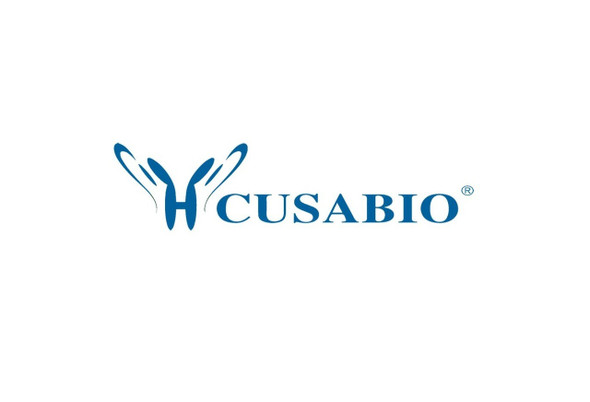Cusabio Virus & Bacteria Recombinants
Recombinant Caenorhabditis elegans ATP-dependent (S) -NAD (P) H-hydRate dehydRatase (R107.2) | CSB-YP333729CXY
- SKU:
- CSB-YP333729CXY
- Availability:
- 25 - 35 Working Days
Description
Recombinant Caenorhabditis elegans ATP-dependent (S) -NAD (P) H-hydRate dehydRatase (R107.2) | CSB-YP333729CXY | Cusabio
Alternative Name(s): ATP-dependent NAD(P)HX dehydratase
Gene Names: R107.2
Research Areas: Others
Organism: Caenorhabditis elegans
AA Sequence: MDHFIKLLPKLTPHLRKGDCGKMGVIGGSLEYTGAPYFAASSASRLGADLIHIFCDPDAAQVIKGYSPDLIVHPGMTANSIIPKLSRMDAIVIGPGLGRNPNIWPLMQELFEFVRNRDVPFVIDGDGLWFVSEHIEKFPRQMSATVLTPNIVEFSRLCKSALGEEDVLNVRNNSQLQHLAAELSRKMNVTIYLKGEVDLVVTPNGEVSKCSTESSLRRCGGQGDVTAGSLGLFLYWAKKNLGDDWTSAHHEAGIASSWLVRTAGRRAFEKHGRSMNTPLLLDEIPKLVRDVETREMKDTVHTDSSKH
Source: Yeast
Tag Info: N-terminal 6xHis-tagged
Expression Region: 1-307aa
Sequence Info: Full Length
MW: 35.9 kDa
Purity: Greater than 90% as determined by SDS-PAGE.
Relevance: Catalyzes the dehydration of the S-form of NAD(P)HX at the expense of ATP, which is converted to ADP. Together with NAD(P)HX epimerase, which catalyzes the epimerization of the S- and R-forms, the enzyme allows the repair of both epimers of NAD(P)HX, a damaged form of NAD(P)H that is a result of enzymatic or heat-dependent hydration.
Reference: 2.2 Mb of contiguous nucleotide sequence from chromosome III of C. elegans.Wilson R., Ainscough R., Anderson K., Baynes C., Berks M., Bonfield J., Burton J., Connell M., Copsey T., Cooper J., Coulson A., Craxton M., Dear S., Du Z., Durbin R., Favello A., Fraser A., Fulton L. , Gardner A., Green P., Hawkins T., Hillier L., Jier M., Johnston L., Jones M., Kershaw J., Kirsten J., Laisster N., Latreille P., Lightning J., Lloyd C., Mortimore B., O'Callaghan M., Parsons J., Percy C., Rifken L., Roopra A., Saunders D., Shownkeen R., Sims M., Smaldon N., Smith A., Smith M., Sonnhammer E., Staden R., Sulston J., Thierry-Mieg J., Thomas K., Vaudin M., Vaughan K., Waterston R., Watson A., Weinstock L., Wilkinson-Sproat J., Wohldman P.Nature 368:32-38(1994)
Storage: The shelf life is related to many factors, storage state, buffer ingredients, storage temperature and the stability of the protein itself. Generally, the shelf life of liquid form is 6 months at -20?/-80?. The shelf life of lyophilized form is 12 months at -20?/-80?.
Notes: Repeated freezing and thawing is not recommended. Store working aliquots at 4? for up to one week.
Function: Catalyzes the dehydration of the S-form of NAD(P)HX at the expense of ATP, which is converted to ADP. Together with NAD(P)HX epimerase, which catalyzes the epimerization of the S- and R-forms, the enzyme allows the repair of both epimers of NAD(P)HX, a damaged form of NAD(P)H that is a result of enzymatic or heat-dependent hydration.
Involvement in disease:
Subcellular Location:
Protein Families: NnrD/CARKD family
Tissue Specificity:
Paythway:
Form: Liquid or Lyophilized powder
Buffer: If the delivery form is liquid, the default storage buffer is Tris/PBS-based buffer, 5%-50% glycerol. If the delivery form is lyophilized powder, the buffer before lyophilization is Tris/PBS-based buffer, 6% Trehalose, pH 8.0.
Reconstitution: We recommend that this vial be briefly centrifuged prior to opening to bring the contents to the bottom. Please reconstitute protein in deionized sterile water to a concentration of 0.1-1.0 mg/mL.We recommend to add 5-50% of glycerol (final concentration) and aliquot for long-term storage at -20?/-80?. Our default final concentration of glycerol is 50%. Customers could use it as reference.
Uniprot ID: P32740
HGNC Database Link: N/A
UniGene Database Link: UniGene
KEGG Database Link: KEGG
STRING Database Link: STRING
OMIM Database Link: N/A










